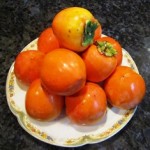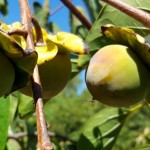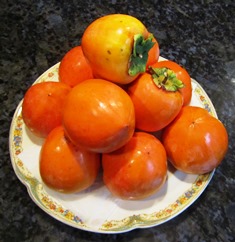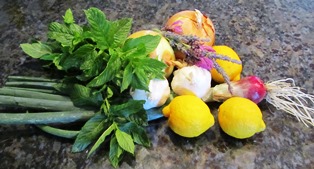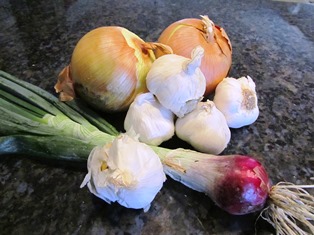Fruit Drop with Young Hachiya Persimmon Trees
My three-year-old Hachiya persimmon tree was loaded with fruit but recently went through a huge fruit drop. Possibly the long stretch of triple-digit summer heat coupled with the tree not getting enough water may have caused this problem. Young trees are more prone to fruit drop than trees that are mature.
I find the fruit drop disconcerting because Hachiyas are my favorite persimmons. It did the same thing last year.
Each autumn, I wait with anticipation watching the fruit and checking it often until October for ripeness. This fruit is highly astringent so must be eaten ripe. The fruit texture is like jelly with a sweet and slightly spicy flavor.
Besides the fruit, what I like about this persimmon is that it becomes a showstopper in the fall with red, gold, or yellow leaves. During winter, the fruit hangs on the tree like ornamentation.
The Hachiya trees are not much bothered by pests or disease. They require at least a half day’s sun and well drained soil. These trees grow to 15 to 20 feet tall. They make great landscape trees and the fruit is a wonderful bonus.
______________________________________________________
If you enjoy reading about growing fruit trees or heirloom plants or trying delicious recipes or keeping bees and chickens and you like a mysteries, check out my Henny Penny Farmette series of cozy mysteries from Kensington Publishing in NY. They’re available online and in traditional bookstores everywhere.

A HIVE OF HOMICIDES is the newest offering in the Henny Penny Farmette series; available Sept. 26, 2017
Currently, A HIVE OF HOMICIDES is a featured title in Barnes & Noble’s September promotional BUY 3, GET 1 FREE sale.
WHAT IS THE BUY 3, GET 1 FREE OFFER?
Everyone who buys a Kensington cozy mystery from the B&N in-store display or any Kensington cozy mystery from BarnesandNoble.com between 9/5/17 – 10/5/17 and registers their purchase at http://sites.kensingtonbooks.com/kensingtoncozies/BN/ will:
— Automatically be entered into Kensington’s “Cozy Mystery Bonanza” sweepstakes for a chance to win a $300 value gift basket. One grand prize winner will be selected after the sale has concluded.
— Automatically receive a free Kensington Cozies recipe booklet plus a download code for the novel A STORY TO KILL by Lynn Cahoon after the sale has concluded.
* * *
DON’T FORGET TO ENTER THE FREE DRAWING AT GOODREADS.COM.
Win a signed copy of A Hive of Homicides along with a gorgeous reversible apron and a set of 2 chicken napkin rings. Enter before September 26 for a chance to win.
See, https://www.goodreads.com/book/show/33911114-a-hive-of-homicides?from_search=true
“Fruit of the Gods” Ready To Eat Now
If you love persimmons, it might interest you to know they are from a genus known by the Greeks as Diospyros kaki, “fruit of the gods.” But these sweet fruits must be fully ripened before consuming. The Fuju and Hachiya are the two main types grown in Northern California gardens. My favorite is the Hachiya; it has to be one of the most sensuous and luscious fruits on the planet to eat.
The Fuju fruit is more like an apple in shape and texture. You can differentiate it from the Hachiya because Fuju is squat and firm-fleshed, reddish yellow, and about the size of a baseball whereas the Hachiya fruit is pendulous-shaped, soft like an overripe plum, orange-scarlet in color, and about the size of a hefty apple or softball. Tamopan is a larger persimmon with a shape like a turban whereas Chocolate is so-named for its brown streaks; its flesh is quite sweet.
Persimmon trees look stunning in a garden, possessing outstanding ornamental qualities. They are relatively pest-free and produce consistently when mature. These small trees are easy to grow, have striking foliage and interesting branch structure, exposed after the leaves have fallen in autumn. They can even be espaliered against a frame or wall.
Hachiya persimmons are astringent on the tongue unless eaten when they are fully soft-ripe. Birds love them, too, so you have to pick them before they are pecked. Ripen in the kitchen before eating or cooking with them. If you want to dry persimmons, pick while the fruit is still firm and with some stem. Tie a string around the stem and hang in the sun until the fruit becomes dried. It will taste something like a high-quality prune or lichti.
Natural Medicines For Healing and Health
Recently, I went through a box of books that I had not unpacked after moving from Miami to Northern California. In the box was Best Remedies, a book written by Dr. Mary L. Hardy, M.D. and Debra L. Gordon for Reader’s Digest.
The book focuses on ways to use natural remedies alone or with conventional medicines in an integrative approach to healing. Many of the remedies involve the use of herbs, honey, vegetables, and oils. Listed below are just a few remedies to treat common maladies.
Chamomile
Chamomile is an herb that when made into tea can be used as a mild sedative and also fights the inflammation of a sore throat. Likewise lemon and honey in hot water can soothe swollen throat tissue.
Echinacea
For treating colds, a tincture of Echinacea purpurea and Echinacea angustifolia can provide relief when made into a tincture and mixed with hot water. Authors Hardy and Gordon recommend 1/4 – 1/2 teaspoon of the tincture in 1-2 ounces of hot water to be consumed every four to six hours.
Garlic
Traditionally used as an herbal remedy for respiratory infections, garlic, to be most effective, must be consumed raw. The best way is to peel and mash 3-4 cloves into pasta, rice, or mashed potatoes.
Ginger Root
For treating bad breath, tea made from ginger root (1- to 2-inch pieces, peeled and steeped in hot water, sweetened with honey) or peppermint tea (all types of mint are easily grown in the garden or in containers) can be effective agents.
Lavender Oil and Aloe Vera
Oil of lavender works as an inflammation and pain reducer while acting as an antiseptic; therefore, it’s a wonderful natural agent for treating minor burns. Once you have applied the lavender oil, you can also apply the sap of an aloe vera plant. Aloe reduces the pain of a burn and promotes healing.
Lemon Juice and Honey
Honey, one of nature’s antiseptics long used to treat respiratory ailments, provides a protective coating of the throat and acts as a humectant (drawing moisture) while the lemon works as an astringent to reduce swelling of inflamed throat tissue.
Olive Oil, Beeswax, and Honey
These three ingredients mixed together in equal parts can be used to treat psoriasis, a disease characterized by itchy, scaly skin. The authors recommend smoothing the mixture onto the affected area of skin before going to bed at night and then covering the skin with plastic wrap, held in place with an elastic bandage.
Onions and Garlic
Onions and garlic are recommended as two vegetables that can lower blood sugar, cholesterol, and blood pressure. Onions are high in vitamin C and, and like garlic, contain immune-enhancing compounds. Garlic reduces blood clotting (thus, preventing heart attacks) and raw garlic has strong immune-stimulating properties as well as antibacterial and antiviral benefits. For people with chronic diseases such as Type 2 Diabetes, these foods should be a regular part of the diet, according to Hardy and Gordon.
St. John’s Wort
St. John’s wort essential oil–10 drops to 1 ounce massage oil–massaged into the skin over painful areas over time may result in relief from nerve pain. Patients who have fibromyalgia, diabetic neuropathy, shingles, Lyme disease, autoimmune disorders, and other types of diseases can suffer nerve pain as stabbing, burning, and shooting sensations. Other herbs believed to revitalize nerve and brain cells include Gotu kola (an herb considered a mainstay in Ayurvedic medicine) and Evening primrose oil that fights inflammation and is found in black currant and borage oil.
Grow these herbs in a garden or in containers on your patio for use to restore and maintain health and also for enhancing flavors in your cooking.
 Facebook
Facebook Goodreads
Goodreads LinkedIn
LinkedIn Meera Lester
Meera Lester Twitter
Twitter




